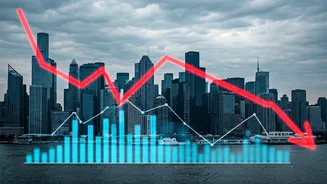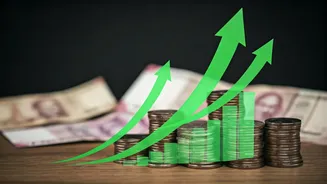Market's Recent Downturn
Prior to the recovery, the Nifty had experienced a three-day downturn. During this period, market participants likely faced challenges and uncertainties.
The downward trend may have been influenced by a combination of factors, which likely included global market trends, domestic economic indicators, and specific sector performances. The pressure exerted on the market could have led to a cautious approach among investors. As the Nifty declined, concerns might have risen regarding the overall market health and the potential for further losses. The recent downturn underscored the inherent volatility of the stock market and the impact of external events on investor sentiment. Investors may have been evaluating their portfolios and re-assessing their investment strategies during this period.
The Rebound Begins
The Nifty's move above 25,600 marked a turning point after the three-day losing streak. This upward movement indicates a shift in market dynamics. The rally suggests that buying interest outweighed selling pressure, resulting in the index’s recovery. Various factors could have fueled this rebound, including positive news, improved market sentiment, or bargain-hunting by investors. The ability of the Nifty to climb above the 25,600 level underscores the market's resilience. The recovery may have instilled confidence among investors and encouraged more participation. This positive development offers a glimpse of hope for the market. Overall, the rebound reflects the evolving market sentiment. It sets the stage for future market movements.
Factors Behind Recovery
Several elements probably contributed to the Nifty's recovery, though the specific causes would need to be thoroughly analyzed. One key factor could have been the reaction to any recent announcements by companies or changes in the economic outlook. Positive developments in specific sectors may have spurred investor confidence. Another factor could have been the impact of global market trends. As international markets performed well, there was a greater propensity for the domestic market to replicate the success. Additionally, shifts in investor sentiment also played a pivotal role. The sentiment might have improved due to positive economic data or encouraging news. In all likelihood, a combination of these elements worked together to fuel the Nifty's upward trajectory.
Investor Sentiment Shifts
The market's turnaround possibly reflects a shift in investor sentiment, from caution to optimism. During the downturn, investors likely adopted a more conservative approach due to concerns about further losses. However, the Nifty's recovery above 25,600 suggests a change in this attitude. The rally might have inspired a renewed confidence among investors, encouraging them to consider fresh investment opportunities. Improved sentiment often translates into increased trading activity and buying interest, thereby helping in market gains. The shift in investor sentiment could be influenced by both external economic events and internal market factors. Positive developments and signs of economic stability tend to contribute to an uptick in confidence. Overall, this change in sentiment is a major driving force behind the market's comeback.
Looking Ahead
As the Nifty recovers, investors will likely be focused on the coming trends. Monitoring market indicators will be essential to anticipate future movements. Analysts and investors will assess various factors, including global events, economic data, and sector-specific performance. The sustainability of the recovery and its ability to surpass 25,600 will be key concerns. Additionally, the actions of institutional investors and foreign investment flows are also significant factors. Investors are expected to make informed decisions based on their risk tolerance and investment strategies. The continued health of the market depends on the interplay of multiple factors. Consequently, careful attention and analysis will be necessary to navigate the dynamic market conditions.













